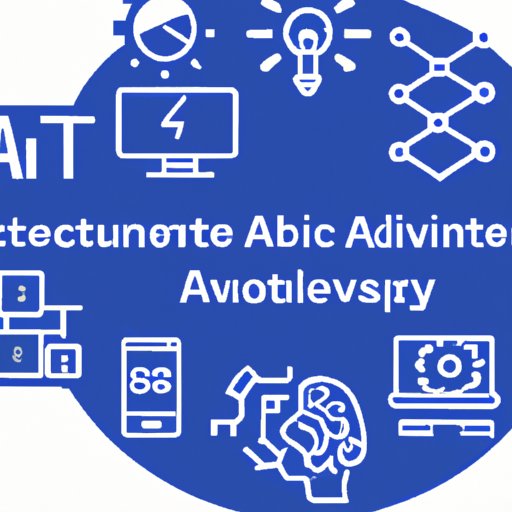Introduction
Artificial Intelligence (AI) is a rapidly evolving field that has seen immense growth over the past decade. AI is used in a variety of industries, from healthcare to finance, to automate processes and improve efficiency. Working on AI can be a challenging but rewarding experience, as it requires knowledge of both the technology and the underlying problem you are trying to solve. This article will provide an overview of the steps necessary to create and deploy an AI solution.

Research Existing AI Technologies and Applications
The first step when working on AI is to research existing technologies and applications. This will help you identify the type of AI technology that best suits your needs. For example, if you want to build an AI-powered chatbot, you may want to look into natural language processing (NLP) or deep learning technologies. Additionally, examining existing AI solutions and their performance can give you insight into how your own project should be developed.

Create a Plan for How to Apply AI to Your Own Project
Once you have identified the type of AI technology that best suits your needs, you can begin creating a plan for how to apply AI to your own project. This plan should include defining the problem you want to solve with AI, designing an AI solution, and outlining the steps necessary to implement the solution. Depending on the complexity of your project, you may need to consult with experts in the field to ensure that you are taking the right approach.
Explore AI Frameworks, Libraries, and Tools
After you have created a plan for your AI project, you can begin exploring AI frameworks, libraries, and tools. Popular AI frameworks, such as TensorFlow and PyTorch, provide the necessary building blocks to develop and deploy AI solutions. Additionally, there are many libraries and tools available that can help you develop your AI solution. For example, scikit-learn is a popular library for machine learning tasks, while OpenCV is a library for computer vision.

Develop Code to Implement the AI Solution
Once you have identified the tools and frameworks necessary to develop your AI solution, you can begin writing code to implement the solution. Depending on the complexity of the problem, you may need to use multiple coding languages. For instance, Python is often used for machine learning, while JavaScript is often used for web development. Additionally, you may need to use other languages, such as C++ and Java, to develop more complex AI solutions.
Test and Evaluate the Performance of the AI Model
Once you have developed the code to implement your AI solution, you need to test and evaluate its performance. This can involve identifying the metrics to measure AI performance, such as accuracy or recall, and then testing and evaluating the model’s results. You can also compare the performance of your model with existing AI solutions to get an idea of how your model stacks up.
Deploy the AI Model into Production
Once you have tested and evaluated the performance of your AI model, you can begin preparing it for deployment. This involves ensuring that the model is optimized for production use, as well as utilizing cloud-based services to deploy the AI model. Additionally, you may need to consider security measures to protect your AI model from malicious actors.
Conclusion
Working on AI projects can be a challenging but rewarding experience. This article provided an overview of the steps necessary to create and deploy an AI solution. These steps include researching existing AI technologies and applications, creating a plan for how to apply AI to your own project, exploring AI frameworks, libraries, and tools, developing code to implement the AI solution, testing and evaluating the performance of the model, and deploying the AI model into production. By following these steps, you can create and deploy your own AI solution.
(Note: Is this article not meeting your expectations? Do you have knowledge or insights to share? Unlock new opportunities and expand your reach by joining our authors team. Click Registration to join us and share your expertise with our readers.)
